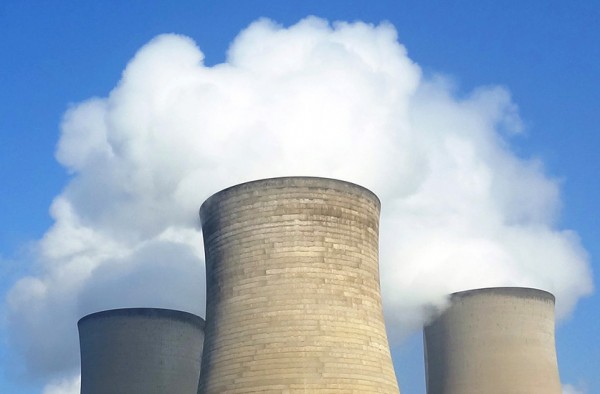 Is slower economic growth a cost of cutting greenhouse gas emissions? Apparently not – at least according to two studies: one by DIW Econ, a German institute for economic research, and the other, earlier this year, by the International Energy Association (see reports below).
Is slower economic growth a cost of cutting greenhouse gas emissions? Apparently not – at least according to two studies: one by DIW Econ, a German institute for economic research, and the other, earlier this year, by the International Energy Association (see reports below).
The IEA study found that, despite global GDP having grown by 6.4% in 2014, global emissions remained flat. The DIW Econ study found that from 2004 to 2014, OECD countries as a whole grew by 16% while cutting fossil fuel consumption by 6% and greenhouse gas emissions by 6.4%.
But what does this mean? If growth accelerated, what would happen to greenhouse gas emissions? Would they begin to rise again? Probably.
The point is that various developments, largely independent of economic growth have been reducing the greenhouse gas emissions/GDP ratio. These developments include: technological advances in energy generation; the switch to alternative fuels in many countries, thanks, in large part to lower renewable energy costs; increased energy efficiency by consumers; and a continuing move from energy-intensive manufacturing to less energy-intensive services.
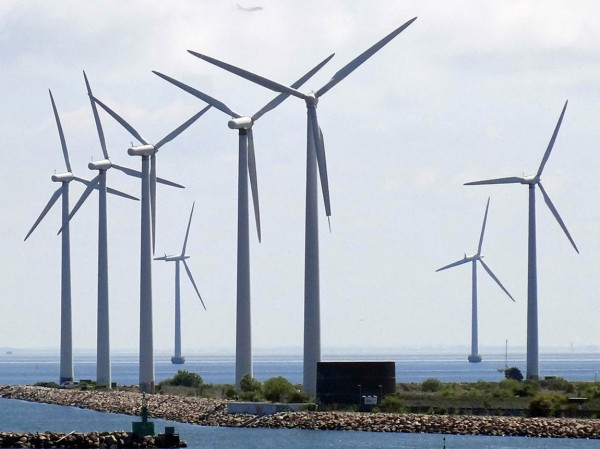 So if governments forced more radical cuts in greenhouse gases, would this reduce the rate of economic growth or have no effect? For a given level of technological advancement, the initial effect would probably be a reduction in economic growth. But to the extent that this encouraged further investment in renewables and energy saving, it might even stimulate economic growth over the longer term, especially if it helped to bring lower energy prices.
So if governments forced more radical cuts in greenhouse gases, would this reduce the rate of economic growth or have no effect? For a given level of technological advancement, the initial effect would probably be a reduction in economic growth. But to the extent that this encouraged further investment in renewables and energy saving, it might even stimulate economic growth over the longer term, especially if it helped to bring lower energy prices.
A big problem in decoupling economic growth from fossil fuel usage is that developing countries, which are taking a growing share of world manufacturing, are more heavily dependent on coal than most developed countries. But even here there seems to be some hope. China, the biggest manufacturer in the developing world, is rapidly increasing its use of renewables. As the IEA press release states:
In China, 2014 saw greater generation of electricity from renewable sources, such as hydropower, solar and wind, and less burning of coal.
If the world is to tackle global warming by making significant cuts in greenhouse gases, there must be a way for developing countries to continue growing while making less use of fossil fuels.
Article
Cutting greenhouse gas emissions won’t slow global economic growth — report The Guardian, Bruce Watson (26/9/15)
Reports
Turning point: Decoupling Greenhouse Gas Emissions from Economic Growth DIW Econ, Lars Handrich, Claudia Kemfert, Anselm Mattes, Ferdinand Pavel, Thure Traber (September 2015)
World Energy Outlook Special Report 2015: Energy and Climate Change International Energy Agency (June 2015)
Questions
- What are the possible causal relationships between cutting greenhouse gas emissions and the rate of economic growth?
- What incentive mechanisms can governments or other agencies adopt to encourage reductions in greenhouse gas emissions without reducing economic growth?
- Can a cap and trade system, such as the European Emissions Trading Scheme help to achieve a given level of emissions reduction at minimum cost to economic growth? Explain.
- How might the developed world support developing countries in moving to a low carbon technology?
- What factors lie behind the falling costs of renewable energy? Are these the same factors that lie behind the falling cost of oil?
- What political problems might hinder the greater production of renewable energy?
- How might an economist set about determining a socially optimal amount of fossil fuel production? What conceptual and philosophical problems might there be in agreeing what is meant by a social optimum?
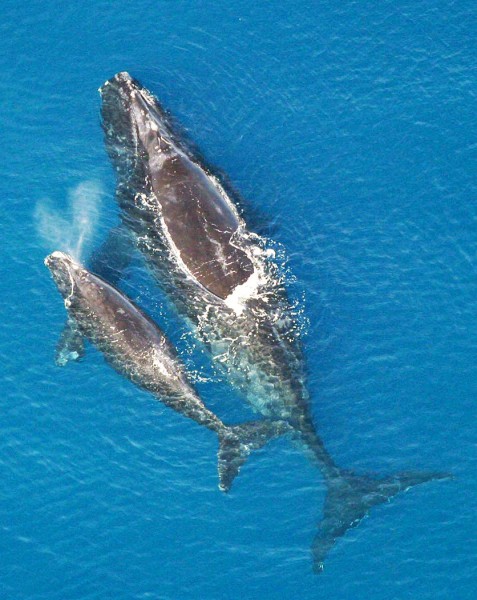 Since the Global Financial Crisis, and especially since 2010, there has been a significant decline in the volume of commercial freight carried by aircraft. Whilst regional and national economies have been hit by fiscal problems, credit snarl-ups and twitchy consumer demand, increases in the price of crude oil (until recently) have compounded air freight cost increases, leading to substitution towards the main alternatives.
Since the Global Financial Crisis, and especially since 2010, there has been a significant decline in the volume of commercial freight carried by aircraft. Whilst regional and national economies have been hit by fiscal problems, credit snarl-ups and twitchy consumer demand, increases in the price of crude oil (until recently) have compounded air freight cost increases, leading to substitution towards the main alternatives.
Whilst some multinational businesses have shifted production back ‘on-shore’, there has been unprecedented growth in sea freight. In the latter case there are, of course, both ‘winners’ and ‘losers’. As the world’s seas and oceans become more and more congested, one of the distinct losers is a large species which shares the water with commercial maritime transport: the whale.
A recent ‘Sharing the Planet’ documentary on BBC Radio 4, highlighted the plight of whales in the world’s open waters. Since the imposition of controls upon the whaling industry, whale numbers had stabilised and even increased. However, the past five years has seen the most significant threat coming from the eerily clinical-sounding ‘ship strike’: that is, unintended incidents of ships hitting and either injuring or killing whales. In particular, the Blue Whale and the Right Whale have been most affected – the Right Whale was almost driven to extinction by ship strikes in the North Atlantic region.
International action is driving a regulatory approach which aims to intervene, for example, to impose speed restrictions in known waters where whales congregate. But this isn’t a universal solution. Even where it is applied, enforcement is tricky and there is industry resistance as already slow shipping freight delivery times are further extended, thus challenging producers under pressure to respond rapidly to changing consumer demand in the world of ecommerce.
But where is the link to the movie Frozen? Well, this year’s top-selling range of toys are tie-ins to Disney’s wintery animated blockbuster. Excess demand for some of the tie-in merchandising has led to  short supply in toy stores and carefully planned production and shipping plans junked. Panicked creation of extra capacity in off-shore production has had to be complemented by the contracting of air freighting options – the lead times are too long to get last-minute products to distributors and retailers in time. Whilst someone has to bear the increased financial cost, the whale might therefore become – at least temporarily – a beneficiary.
short supply in toy stores and carefully planned production and shipping plans junked. Panicked creation of extra capacity in off-shore production has had to be complemented by the contracting of air freighting options – the lead times are too long to get last-minute products to distributors and retailers in time. Whilst someone has to bear the increased financial cost, the whale might therefore become – at least temporarily – a beneficiary.
But the message is clear: globalised production and distribution involve a complex web of trade-offs. 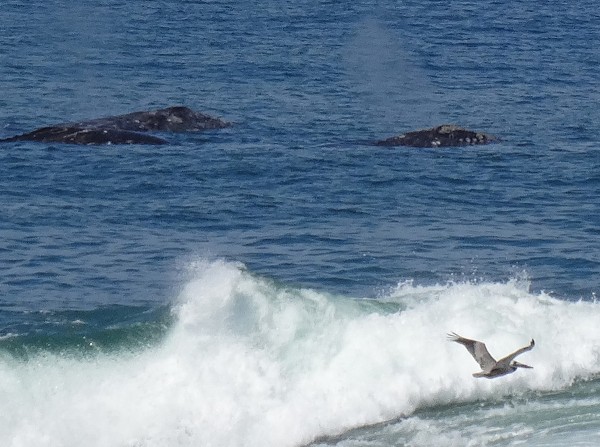 Where negative externalities hit those without a global voice, this adds weight to the continued efforts towards sustainability and the full costing of production and exchange. Whales are a ‘flagship species’ in diverse ecological systems. The planet cannot afford to lose them. And so, whilst your gift purchases this festive season may have been made possible by products having been air-freighted rather than being sent by yet another ship, don't rest on your laurels. Consider this variant on a traditional injunction: whales are for life, and not just for Christmas.
Where negative externalities hit those without a global voice, this adds weight to the continued efforts towards sustainability and the full costing of production and exchange. Whales are a ‘flagship species’ in diverse ecological systems. The planet cannot afford to lose them. And so, whilst your gift purchases this festive season may have been made possible by products having been air-freighted rather than being sent by yet another ship, don't rest on your laurels. Consider this variant on a traditional injunction: whales are for life, and not just for Christmas.
Guest post by Simon Blake, University of Warwick
Books and articles
Nature in the Balance: The Economics of Biodiversity Oxford Dieter Helm and Cameron Hepburn (eds) (2014)
Frozen dolls sell out Express Sarah Ann Harris (9/12/14)
Biodiversity Finance and Economics Tread Softly November 2014
Information
EU Business and Biodiversity Platform EC Environment DG
Whales & Dolphins (cetaceans) World Wildlife Fund
Questions
- Why might UK-based businesses be concerned with the plight of whales in the world’s seas and oceans?
- In what ways might shipping firms – and the manufacturers who contract their services – be regarded as ‘good’ businesses?
- Using the concept of externalities, how would you account for the impacts of global commerce upon whales?
- How could you conduct a scientific evaluation of the trade-offs involved?
- Can damage to one species by the actions of business ever be offset by ‘making good’ through corporate action elsewhere?
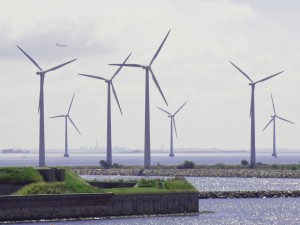 The UK hosted the third Clean Energy Ministerial conference on 25/26 April 2012. More than 20 energy ministers from around the world attended. In his address, David Cameron, gave his backing to more wind farms being built in the UK, both onshore and offshore.
The UK hosted the third Clean Energy Ministerial conference on 25/26 April 2012. More than 20 energy ministers from around the world attended. In his address, David Cameron, gave his backing to more wind farms being built in the UK, both onshore and offshore.
Currently just under 10 per cent of the UK’s electricity is generated from renewable sources. But to meet agreed EU targets this must increse to at least one-third by 2020. Most of this will have to come from wind.
But whilst wind turbines create no CO2 emissions, electricity generated from wind is currently some 15% more expensive than from gas. To make wind power profitable, energy companies are required by law to generate a certain percentage of their electricity from renewables and the cost is passed on to the consumer. This adds some £20 per year to the average household energy bill.
Over the coming years, many new power plants will have to be built to replace the electricity generated from older plants that reach the end of their life. So what types of plant should be built? Unfortunately measuring the costs and benefits from power generation is not easy. For a start, energy needs are not easy to predict. But more importantly, electricity generation involves huge environmental and social externalities. And these are extremely difficult to measure.
What is more, the topic is highly charged politically. The social costs do not fall evenly on the population. People might favour wind turbines, but they do not want to see one outside their window – or from their golf course!
The following videos and articles will give you some insight into the difficulties that any decision makers face in making the ‘right’ decisions about electricity generation
Webcasts and podcasts
 Can Cameron still claim the ‘greenest government ever’? Channel 4 News, Tom Clarke (26/4/12)
Can Cameron still claim the ‘greenest government ever’? Channel 4 News, Tom Clarke (26/4/12)
 Energy Secretary: UK will meet green targets BBC News, Ed Davey (25/4/12)
Energy Secretary: UK will meet green targets BBC News, Ed Davey (25/4/12)
 Donald Trump attacks Scottish government’s green policy BBC News, James Cook (25/4/12)
Donald Trump attacks Scottish government’s green policy BBC News, James Cook (25/4/12)
 Trump: Wind farms ‘bad for Scotland’ BBC News (24/4/12)
Trump: Wind farms ‘bad for Scotland’ BBC News (24/4/12)
 Tycoon Trump fights Scotland over wind farms near golf resortReuters, Deborah Gembara (25/4/12)
Tycoon Trump fights Scotland over wind farms near golf resortReuters, Deborah Gembara (25/4/12)
 Wind power blows Siemens off course Euronews, Anne Glemarec (25/4/12)
Wind power blows Siemens off course Euronews, Anne Glemarec (25/4/12)
 Mexico inaugurates largest wind farm in Latin America BBC News, Carolina Robino (9/3/12)
Mexico inaugurates largest wind farm in Latin America BBC News, Carolina Robino (9/3/12)
 BP’s Flat Ridge 2 Wind Farm in Kansas YouTube, BPplc (10/4/12)
BP’s Flat Ridge 2 Wind Farm in Kansas YouTube, BPplc (10/4/12)
 Arnold Schwarzenegger: Green quest goes on BBC News (26/4/12)
Arnold Schwarzenegger: Green quest goes on BBC News (26/4/12)
 Denmark Pioneers Clean Energy Green TV (18/4/12)
Denmark Pioneers Clean Energy Green TV (18/4/12)
 EU wind industry defies recession Green TV (16/4/12)
EU wind industry defies recession Green TV (16/4/12)
 Wind Farm Issues – Compilation LiveLeak (15/4/12)
Wind Farm Issues – Compilation LiveLeak (15/4/12)
News articles
David Cameron commits to wind farms The Telegraph, Louise Gray (26/4/12)
David Cameron says wind energy must get cheaper The Telegraph, Louise Gray (27/4/12)
Could 2012 be year of the wind turbine? The Telegraph, Louise Gray (3/2/12)
Green energy vital, says David Cameron Independent, Emily Beament (26/4/12)
Cameron: renewables are ‘vital to our future’ businessGreen, Will Nichols and James Murray (26/4/12)
Green energy ‘must be affordable’ – Cameron BBC News (26/4/12)
Wind farms will kill tourism, says Donald Trump Independent (25/4/12)
Donald Trump accuses Salmond of ‘betrayal’ over wind farm plans The Telegraph, Simon Johnson (25/4/12)
Turbine scheme provokes wuthering gale of protest Independent, Mark Branagan (6/4/12)
Prince Charles endorses wind power in new film at Sundance Festival The Telegraph, Roya Nikkhah (29/4/12)
Study claims tourists ‘not put off’ by wind farms in Scotland BBC News (24/4/12)
Tide turns in favour of wave power instead of wind farms Scotsman, David Maddox (23/4/12)
Rush towards wind-generated electricity will not reduce fuel poverty Power Engineering (21/4/12)
Shell says no to North Sea wind power Guardian, Terry Macalister (26/4/12)
David Cameron, the Speech He Needs to Make Huffington Post, Juliet Davenport (25/4/12)
Campaigners want David Cameron to come clean over wind farm policy Western Daily Press (27/4/12)
Being Green Doesn’t Mean Higher Electricity Costs Says Green Energy UK DWPub (27/4/12)
Documents
Cost Benefit Methodology for Optimal Design of Offshore Transmission Systems Centre for Sustainable Electricity and Distributed Generation, Predrag Djapic and Goran Strbac (July 2008)
A Cost Benefit Analysis of Wind Power University College Dublin, Eleanor Denny (19/1/07)
Ecological and economic cost-benefit analysis of offshore wind energy Renewable Energy 34, Brian Snyder, Mark J. Kaiser (2009)
Questions
- Why is difficult to predict the future (financial) cost per kilowatt-hour of electricity generation by the various methods?
- Why is it difficult to estimate the demand for electricity in 10 years’ time?
- Identify the external benefits and costs of electricity generation from (a) onshore wind turbines; (b) offshore wind turbines.
- Is ‘willingness to pay’ a good method of establishing the value of external benefits and costs?
- What are the steps in a cost–benefit analysis?
- What types of problems are there in measuring external benefits and costs?
 My son Andrew Sloman (see also) is currently in Goa. My wife Alison and I went to visit him over half term – our first trip to India. Goa is a beautiful state, with wonderful beaches, fantastic food and perfect weather in February. But inland from this tourist haven lies an environmental disaster caused by the open-cast extraction of iron ore.
My son Andrew Sloman (see also) is currently in Goa. My wife Alison and I went to visit him over half term – our first trip to India. Goa is a beautiful state, with wonderful beaches, fantastic food and perfect weather in February. But inland from this tourist haven lies an environmental disaster caused by the open-cast extraction of iron ore.
This tiny state by Indian standards produces more than 60% of India’s iron ore exports. Whilst, along with tourism, the iron ore industry has been one of the largest contributors to the Goan economy, its environmental footprint is massive. Deforestation and water and air pollution are just three of the environmental externalities.
So should a cap be placed on the amount of iron ore that is mined? Should the industry be taxed more heavily? Should tough environmental standards be imposed on the industry? Or should it simply be allowed to continue, given its large contribution to the Goan economy? Or, at the other extreme, should the industry be closed? The linked article looks at some of the issues. Try to identify, as an economist, what information you would require in order to come to a conclusion to these questions.
Greens’ shout for cap on iron ore mining falls on deaf ears Times of India, Paul Fernandes (28/2/12)
Questions
- What negative externalities are involved with the Goan iron ore industry? Are there any positive externalities?
- What difficulties are there in measuring the negative externalities?
- How would you set about doing a cost–benefit analysis of (a) expanding the Goan iron ore industry; (b) shutting it?
- Explain the following: “The net present value of the opportunity cost for 25 years at 12% social discount rate of giving it up is greater than its environmental cost by Rs 14,449 crore, the report states.” (A crore is 10 million and Rs is the symbol for an Indian Rupee, where £1 = approximately 78 rupees.)
- What difficulties are there in attempting to take distribution into account when doing a cost–benefit analysis?
The health of an economy is generally measured in terms of the growth rate in GDP. A healthy economy is portrayed as one that is growing. Declining GDP, by contrast, is seen as a sign of economic malaise; not surprisingly, people don’t want rising unemployment and falling consumption. The recession of 2008/9 has generally been seen as bad news.
But is GDP a good indicator of human well-being? The problem is that GDP measures the production of goods and services for exchange. True, such goods and services are a vital ingredient in determining human well-being. But they are not the only one. Our lives are not just about consumption. What is more, many of our objectives may go beyond human well-being. For example, the state of the environment – the flora and fauna and the planet itself.
Then there is the question of the capital required to produce goods and maintain a healthy and sustainable environment. Capital production is included in GDP and the depreciation of capital is deducted from GDP to arrive at a net measure. But again, things are left out of these calculations. We include manufactured capital, such as factories and machinery, but ignore natural capital, such as rain forests, coral reefs and sustainable ecosystems generally. But the state of the natural environment has a crucial impact on the well-being, not only of the current generation, but of future generations too.
In the video podcast below, Professor Sir Partha Dasgupta, from the Faculty of Economics at the University of Cambridge and also from the University of Manchester, argues that the well-being of future generations requires an increase in the stock of capital per head, and that, in measuring this capital stock, we must take into account natural capital. In the paper to which the podcast refers, he argues “that a country’s comprehensive wealth per capita can decline even while gross domestic product (GDP) per capita increases and the UN Human Development Index records an improvement.”
 Nature’s role in sustaining economic development (video podcast) The Royal Society, Partha Dasgupta
Nature’s role in sustaining economic development (video podcast) The Royal Society, Partha Dasgupta
Nature’s role in sustaining economic development Philisophical Transactions of the Royal Society B, vol 365, no. 1537, pp 5–11, Partha Dasgupta (12/1/10)
GDP is misleading measure of wealth, says top economist University of Manchester news item (21/12/09)
Economics and the environment: Down to earth index Guardian (28/12/09)
Questions
- Why might a rise in GDP result in a decline in human well-being?
- In what sense is nature ‘over exploited’?
- What is meant by ‘comprehensive wealth’ and why might comprehensive wealth per capita decline even though the stocks of both manufactured capital and human capital are increasing?
- What is meant by ‘shadow prices’ in the context of natural capital?
- How might economists go about measuring the shadow prices of capital?
- What factors should determine the rate of discount chosen for projects that impact on the future state of the environment?
 Is slower economic growth a cost of cutting greenhouse gas emissions? Apparently not – at least according to two studies: one by DIW Econ, a German institute for economic research, and the other, earlier this year, by the International Energy Association (see reports below).
Is slower economic growth a cost of cutting greenhouse gas emissions? Apparently not – at least according to two studies: one by DIW Econ, a German institute for economic research, and the other, earlier this year, by the International Energy Association (see reports below). So if governments forced more radical cuts in greenhouse gases, would this reduce the rate of economic growth or have no effect? For a given level of technological advancement, the initial effect would probably be a reduction in economic growth. But to the extent that this encouraged further investment in renewables and energy saving, it might even stimulate economic growth over the longer term, especially if it helped to bring lower energy prices.
So if governments forced more radical cuts in greenhouse gases, would this reduce the rate of economic growth or have no effect? For a given level of technological advancement, the initial effect would probably be a reduction in economic growth. But to the extent that this encouraged further investment in renewables and energy saving, it might even stimulate economic growth over the longer term, especially if it helped to bring lower energy prices.




